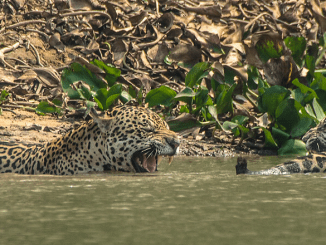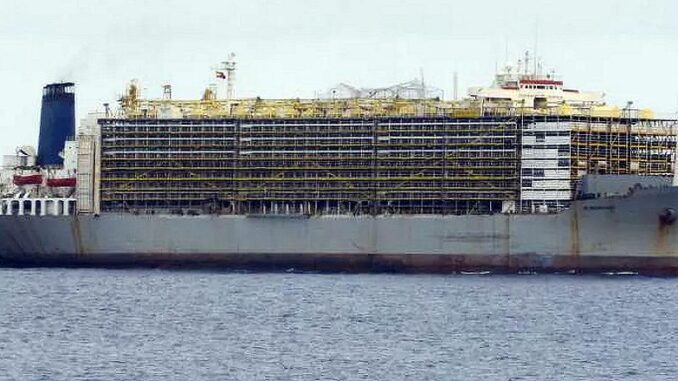
By Don Pinnock
PRETORIA, South Africa, August 8, 2025 (ENS) – The controversial debate on whether the live-animal export trade can ever be humane – or should be banned altogether – has been reopened by the Department of Agriculture’s release of draft regulations governing the export of live animals by sea.
The regulations appear to represent a major tightening of oversight in a sector long criticised for exposing sheep, cattle and goats to prolonged suffering on the high seas.
The rules are so stringent that it’s unlikely that any of the existing live-animal transport vessels would be able to comply, raising the possibility that the legislation could simply prevent live-animal transport completely. Or simply be ignored.
Published under the Animals Protection Act of 1962, the 60-page document details new standards for everything from the condition of vehicles and vessels, to the qualifications of on-board veterinarians, the layout of pens, the density of animals per square metre and even the permissible levels of ammonia gas created when animals urinate.
For the nonprofit Humane World for Animals South Africa, HWASA, the draft rules fall short of what’s needed and are not a reason to celebrate.

“The science is clear: live export by sea is fundamentally incompatible with animal welfare,” said Tony Gerrans, executive director of HWASA, which changed its name from Humane Society International Africa on February 14, to establish clarity in its mission to create lasting change for animals in South Africa.
“This is our moment to choose compassion over cruelty,” said Gerrans, who holds a masters degree in animal law from Harvard University.
His organisation sees the department’s call for written comments by August 25 as the last chance to stop what they describe as a fundamentally cruel trade that no amount of regulation can fix.
South Africa’s largest buyer and exporter of live animals, Al Mawashi South Africa (Pty) Ltd say they will respond to the regulations. The company provides transportation, trading, and delivery services for livestock and halal meat, the only meat that Muslims can consume under Islamic law.
To be considered halal, the meat must come from animals that are alive and healthy at the time of slaughter, which is performed by a Muslim saying “Allah,” which is Arabic for “the God.”
Al Mawashi’s in-house doctor, Sake van der Wal, MD, said the company would do this within the next few days. “We are positive that Al Mawashi will be able to continue to export live animals by sea,” he told the Daily Maverick newspaper, “and that more exporters might enter the market as the regulations will bring clarity to all the relevant stakeholders.”
A History of Suffering
The impact of live animal transport hit Cape Town in 2024 when the Al Kuwait, a vessel infamous for its cramped and unsanitary conditions, docked in the harbour to transport thousands of sheep to the Middle East.
The images that emerged – heat-stressed animals, some dead on arrival, and an overpowering stench that local residents said lingered for days – triggered public outrage and led to renewed calls for South Africa to ban the live export trade altogether.
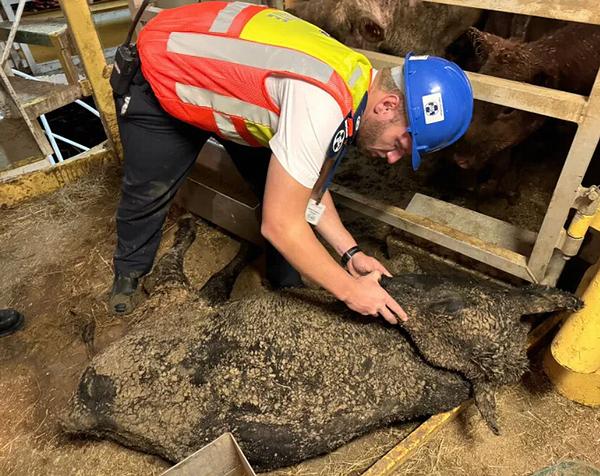
South Africa’s Democratic Alliance political party, which governs Cape Town, condemned the shipment, saying in a statement, “Live export, as evidenced by this situation, exposes animals to perilous conditions such as dangerous levels of ammonia, rough seas, extreme heat stress, injuries, dirty environments, exhaustion and even death.”
Also in 2024, the Al Messilah docked in East London with 60,000 sheep and 1,500 cattle, raising a similar outcry.
The public backlash is likely to have shaped the department’s decision to revisit its regulatory framework.
The new draft rules acknowledge the suffering inherent in transporting live animals by sea – an undertaking that can last weeks, with animals confined in tight, sweltering pens, exposed to fluctuating temperatures, poor air quality and rough seas.
No matter how many welfare boxes you tick, the reality is that these animals endure weeks of confinement, heat stress and rough seas – conditions that simply can’t be made humane.
The draft attempts to mitigate these risks with a detailed list of provisions: ample feed and clean water must be stocked, with reserves to cover at least seven extra days in case of delays.
All vessels will be required to have working ventilation systems, drainage to remove waste and backup power supplies to avoid the catastrophic consequences of a mechanical failure at sea.
On-board veterinarians must monitor panting scores to detect early signs of heat stress – with specific numeric thresholds that, on paper, look reassuring. But can they be implemented on foreign vessels?
A Deeper Look at the ‘Safeguards’
These measures are undeniably more robust than the previous patchwork of guidelines. For example, the regulations require that animals be given enough space to stand naturally, move, lie down and access feed and water troughs without contamination by urine or feces. Sick or injured animals must be isolated and treated immediately – or euthanised humanely if suffering is severe.
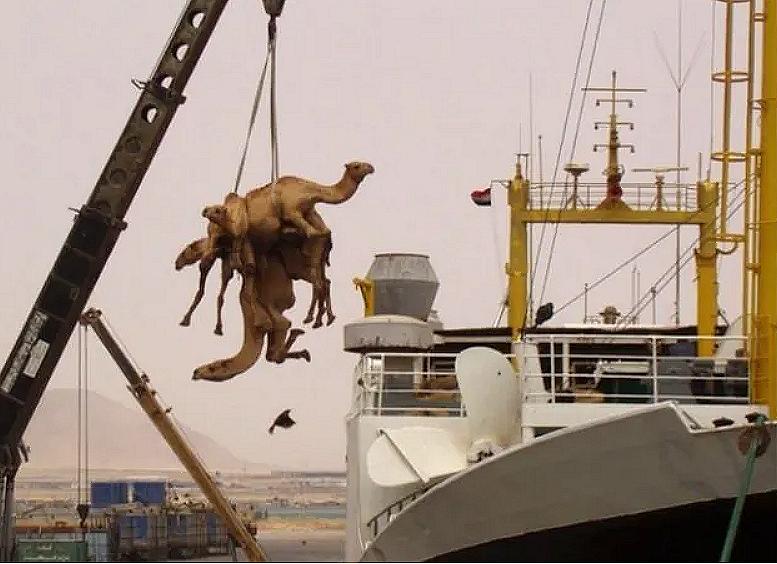
The draft even spells out mundane details such as the minimum distance animals must be kept from engine rooms to avoid excess heat, or the need for lairage lighting that doesn’t create dark spots where animals can become distressed. Regular cleaning is required to prevent ammonia levels exceeding 25 parts per million, a common hazard on crowded ships.
But for Humane World, these measures amount to window dressing. “It’s like rearranging deck chairs on the Titanic,” said Gerrans. “No matter how many welfare boxes you tick, the reality is that these animals endure weeks of confinement, heat stress and rough seas – conditions that simply can’t be made humane.”
This is the crux of the disagreement.
The government’s position, implied in the regulations, is that the live export trade can continue, provided stricter controls are enforced.
But for animal welfare campaigners like Humane World, the entire premise is flawed. The nonprofit argues that live export is driven not by necessity, but by the economics of supplying fresh meat to overseas markets unwilling to invest in their own slaughtering and processing capacity.
It contends that a more humane alternative is clear: slaughter animals locally, under South Africa’s existing welfare laws, and export the chilled or frozen meat instead.
“Rich Saudis are stripping the country of livestock, which is good for some farmers but depleting the local market. Prices for meat are going to rise and local people who depend on meat processing are going to lose their jobs,” Inspector Nazareth Appelsamy with the National Council of Societies for the Prevention of Cruelty to Animals, NSPCA, said.
New Zealand banned live exports by sea in 2022, Australia has passed legislation to end live sheep exports by 2028 and the UK banned live exports for slaughter in 2024.
Public Sentiment and Legal Leverage
Legally, the Animals Protection Act gives the South African government broad powers to regulate the trade, but not to ban it outright without a change in legislation. That’s why Humane World is urging the public to submit comments on the draft before the August 25 deadline, hoping to demonstrate widespread opposition.
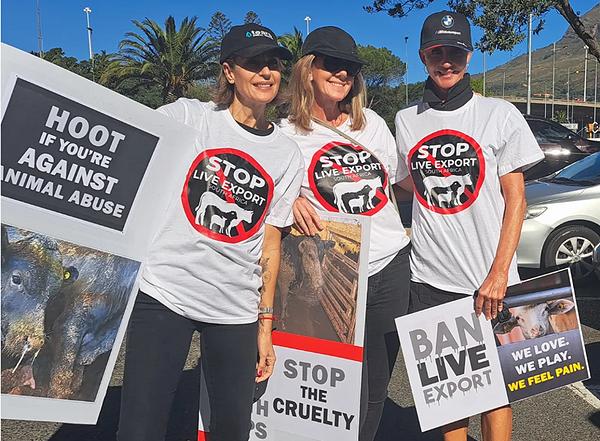
It argues that even the world’s strictest standards – such as Australia’s controversial live export rules – have failed to prevent shocking welfare breaches. In South Africa’s case, it points to the high summer temperatures in the Middle East, which regularly exceed the animals’ heat stress thresholds, despite new requirements that routes through extreme heat be avoided.
Experience suggests that oversight can be patchy, especially once ships leave port. At that stage South African regulations will be unenforceable.
For Gerrans, the risk of animals dying or suffering en route is simply too high. “It’s a policy choice,” he said. “Are we willing to accept that thousands of animals will suffer so a few exporters can make a profit?”
For Humane World this is an opportunity for South Africa to reposition itself as a leader in humane farming practices – instead of following a model that other nations are increasingly rejecting.
A Question of Enforcement
The regulations rely heavily on the presence of on-board veterinarians, competent authorities and official inspectors to ensure compliance – but experience suggests that oversight can be patchy, especially once ships leave port. At that stage South African regulations will be unenforceable.
The department’s draft does acknowledge this, setting out rigorous documentation requirements and real-time data logging for temperatures, humidity, ammonia levels and animal deaths. But whether these records will be transparent and accessible to the public remains unclear.
The regulations are silent on penalties for noncompliance, raising the possibility that breaches will result in little more than a slap on the wrist.
Next Steps
The final version of the regulations is scheduled for later this year, after the public comment period closes in August. Humane World for Animals has undertaken to mobilise its supporters – urging every South African who cares about animal welfare to submit comments demanding a full ban.
“This is a test of our values,” Gerrans said. “We have a chance to show that our country’s laws reflect compassion and scientific evidence, not just outdated economic interests.”
Featured image: The 95-metre-long Al Mawashi express animal transporter, Mawashi Express, can carry an estimated 20,000 live cattle. They stand in crowded pens on eight giant decks open to the elements. (Photo: Supplied)
Editor’s Note: This article was originally published in the South African newspaper The Daily Maverick. See it here. Republished with permission.
© 2025, Environment News Service. All rights reserved. Content may be quoted only with proper attribution and a direct link to the original article. Full reproduction is prohibited.



